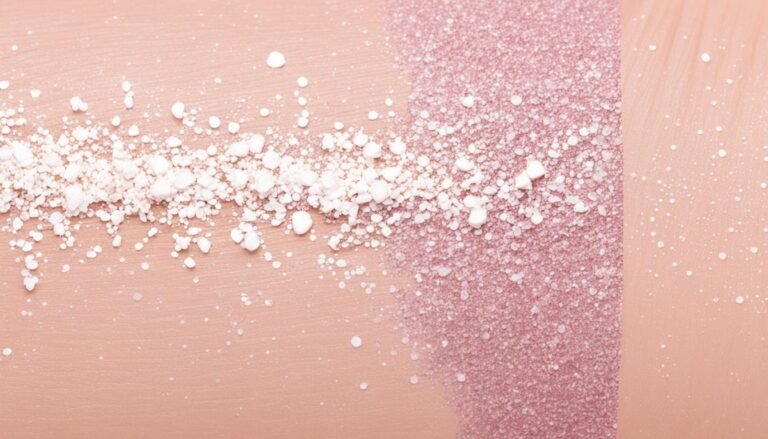Which colour is perfect for skin?
Have you ever wondered which color is perfect for your skin? The one that can effortlessly bring out your natural beauty and make heads turn wherever you go? We often find ourselves standing in front of a mirror, pondering over the vast array of colors, unsure which one will truly flatter our complexion.
The truth is, determining your undertone and skin tone is the key to finding the perfect colors that complement your complexion. It’s not just about choosing any color; it’s about choosing the right color that enhances your natural beauty and makes you shine from within.
So, are you ready to unlock the secret of finding the perfect color for your skin? Let’s dive in and discover the world of colors that can truly bring out the best in you.
Key Takeaways:
- Determining your undertone and skin tone is essential when choosing colors that flatter your complexion.
- Warm undertones are complemented by earthy hues, while cool undertones look stunning in jewel tones.
- Neutral skin tones can experiment with both neutral and bright colors.
- Dressing for fair, tan, and dark skin tones involves knowing which colors will enhance your natural beauty.
How to Identify Your Skin Tone and Undertone
When it comes to finding the perfect colors that complement your complexion, identifying your skin tone and undertone is crucial. By determining whether you have warm or cool undertones, you can choose colors that enhance your natural beauty. But how exactly do you identify your skin tone and undertone?
One method is to check the color of your veins. Take a look at the veins on the inside of your wrist. If they appear blue or purple, you likely have a cool undertone. On the other hand, if your veins have a greenish tint, you probably have a warm undertone.
Another way to identify your undertone is by trying on jewelry in different tones. Pay attention to how gold and silver jewelry look against your skin. If gold complements your complexion better, you likely have warm undertones. If silver looks more flattering, you probably have cool undertones.
Once you’ve determined your undertone, it’s time to explore the colors that work best for you. If you have warm undertones, opt for earthy hues like amber and beige. Pastel shades like peach and lavender also complement warm-toned individuals. On the other hand, cool-toned individuals can rock jewel tones like emerald and ruby. Blush and pink undertones also enhance cool undertones.
But what if you have a neutral skin tone? Well, the good news is that you can experiment with both neutral colors and bright colors. Neutral skin tones have both warm and cool hues in their complexion, so feel free to play around with a variety of shades.
To summarize, identifying your skin tone and undertone involves checking the color of your veins and trying on jewelry in different tones. Cool undertones match well with jewel tones and blush undertones, while warm undertones look great in earthy and pastel shades. Neutral skin tones have the flexibility to experiment with a wide range of colors.
Now that you know how to identify your skin tone and undertone, it’s time to move on to the next section, where we’ll discuss how to dress for different skin tones.
How to Dress for Different Skin Tones
When it comes to dressing for different skin tones, selecting the right colors can make all the difference in enhancing your natural beauty. Whether you have fair skin, tan skin, or dark skin, understanding which hues suit your complexion is key to creating a stylish wardrobe.
If you have fair skin, pastels and jewel tones are your best friends. These colors, such as soft pinks and rich emeralds, beautifully complement your fair complexion. For those with medium fair skin tones, the options are endless. Feel free to experiment with a wide range of colors, from earthy tones to vibrant shades.
Light tan skin tones can embrace warm hues like peach and coral, which bring a radiant glow to your complexion. Pastels and earthy tones also work well for medium tan skin tones, allowing you to explore a variety of soft and natural colors that suit your skin tone.
For those with dark tan or dark skin tones, embrace the richness of ruby reds, deep emeralds, and other jewel tones. These colors not only exude sophistication but also beautifully complement your skin tone. Earthy hues, such as warm browns and deep oranges, are also great choices for creating a stylish and flattering look that accentuates your dark skin.






